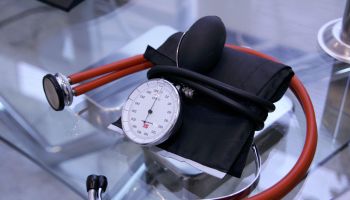
Source: David Tise / Getty
Heat Stroke
Heat stroke is the most serious heat-related illness. It occurs when the body becomes unable to control its temperature: the body’s temperature rises rapidly, the sweating mechanism fails, and the body is unable to cool down. When heat stroke occurs, the body temperature can rise to 106°F or higher within 10 to 15 minutes. Heat stroke can cause death or permanent disability if emergency treatment is not given.
Symptoms
Symptoms of heat stroke include:
- Confusion, altered mental status, slurred speech
- Loss of consciousness (coma)
- Hot, dry skin or profuse sweating
- Seizures
- Very high body temperature
- Fatal if treatment delayed
First Aid
Take the following steps to treat a worker with heat stroke:
- Call 911 for emergency medical care.
- Stay with worker until emergency medical services arrive.
- Move the worker to a shaded, cool area and remove outer clothing.
- Cool the worker quickly with a cold water or ice bath if possible; wet the skin, place cold wet cloths on skin, or soak clothing with cool water.
- Circulate the air around the worker to speed cooling.
- Place cold wet cloths or ice on head, neck, armpits, and groin; or soak the clothing with cool wate
Heat Exhaustion
Heat exhaustion is the body’s response to an excessive loss of the water and salt, usually through excessive sweating. Workers most prone to heat exhaustion are those that are elderly, have high blood pressure, and those working in a hot environment.
Symptoms
Symptoms of heat exhaustion include:
- Headache
- Nausea
- Dizziness
- Weakness
- Irritability
- Thirst
- Heavy sweating
- Elevated body temperature
- Decreased urine output
First Aid
Treat a worker suffering from heat exhaustion with the following:
- Take worker to a clinic or emergency room for medical evaluation and treatment.
- If medical care is unavailable, call 911.
- Someone should stay with worker until help arrives.
- Remove worker from hot area and give liquids to drink.
- Remove unnecessary clothing, including shoes and socks.
- Cool the worker with cold compresses or have the worker wash head, face, and neck with cold water.
- Encourage frequent sips of cool water.
CLICK HERE to read story














